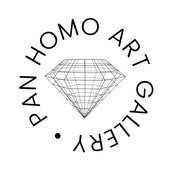Pan Homo Art Gallery Videos
Gay Video Art - Impact with Artistic Means
When thinking of famous gay artworks that made an impact, video art is usually not the first medium which springs to mind. In spite of the fact that art collectors usually overlook this creative medium, over the years, video art has emerged as a powerful medium of creative expression for artists, particularly those belonging to marginalized communities such as the LGBTQ+ community.
In this post, I will focus on some of the most famous gay video art works, which have not only challenged societal norms but also pushed the boundaries of artistic expression. During these troubling times in Israel, it is important to try and take advantage of every means we have to promote social change and tolerance.
One of the most famous gay video art pieces is "My Hustler" by Andy Warhol. The video, shot in 1965, shows three men lounging on a beach in Fire Island, New York. The film is notable for its depiction of the gay subculture of Fire Island and for its frank portrayal of homosexuality. The video is often cited as an early example of queer cinema and has been screened at numerous film festivals and art exhibitions.
Another famous gay video art piece is "Fire in My Belly" by David Wojnarowicz. This video was created in 1986 as a protest against the AIDS crisis and the Reagan administration's inadequate response to it. The video shows a series of incoherent provocative images, including ants crawling over a crucifix and a man's face being sewn shut. The video was originally part of a larger work called "A Fire in My Belly" which was removed from a Smithsonian exhibition in 2010 due to its controversial content. The controversy surrounding the removal of the video from the exhibition led to a renewed interest in Wojnarowicz's work.
A Fire in My Belly from Fotográfica Fundación Televisa on Vimeo.
"Looking for Langston" by Isaac Julien is another significant gay video art piece. The film, shot in 1989, explores in a somewhat loose context the life and work of Langston Hughes, a prominent African-American poet who was also gay. The film is a poetic tribute to Hughes and his work and uses a variety of techniques to explore the themes of race, sexuality, and artistic expression. The film was presented at numerous film festivals and art exhibitions and has since become a seminal work of queer black cinema.
LOOKING_FOR_LANGSTON1989 from Cine Gay Online on Vimeo.
Finally, "Tongues Untied" by Marlon Riggs is a ground-breaking gay video art piece that explores the experiences of Black gay men in America. The film, shot in 1989, uses a combination of personal testimony, poetry, and music to convey the struggle of black gay men.
And in Israel?
Contemporary artist and photographer Michael Liani explores the intersections between marginalized communities throughout Israel, with video art. His short films portray various local traditional cultural customs, along with a little queer element of defiance.
Award-winning young gay artist Ben Hantkant, through his acclaimed short film “War Room”, explores the relationship Israeli gay and queer men have with the military. In the film there is a controversial scene of the artist getting pegged from behind by himself, under orders by a commander. This film won 1st prize in the Israeli short film competition of the Tel Aviv LGBTQIA+ film festival TLVFest, and was featured in art festivals and biennales around the world.
It is important to support gay and queer video artists, to continue spreading messages of tolerance through artistic means. Art is a weapon of the mind, and through artistic means one can hope to promote consciousness.
To view Ben Hantkant’s full collection click here





